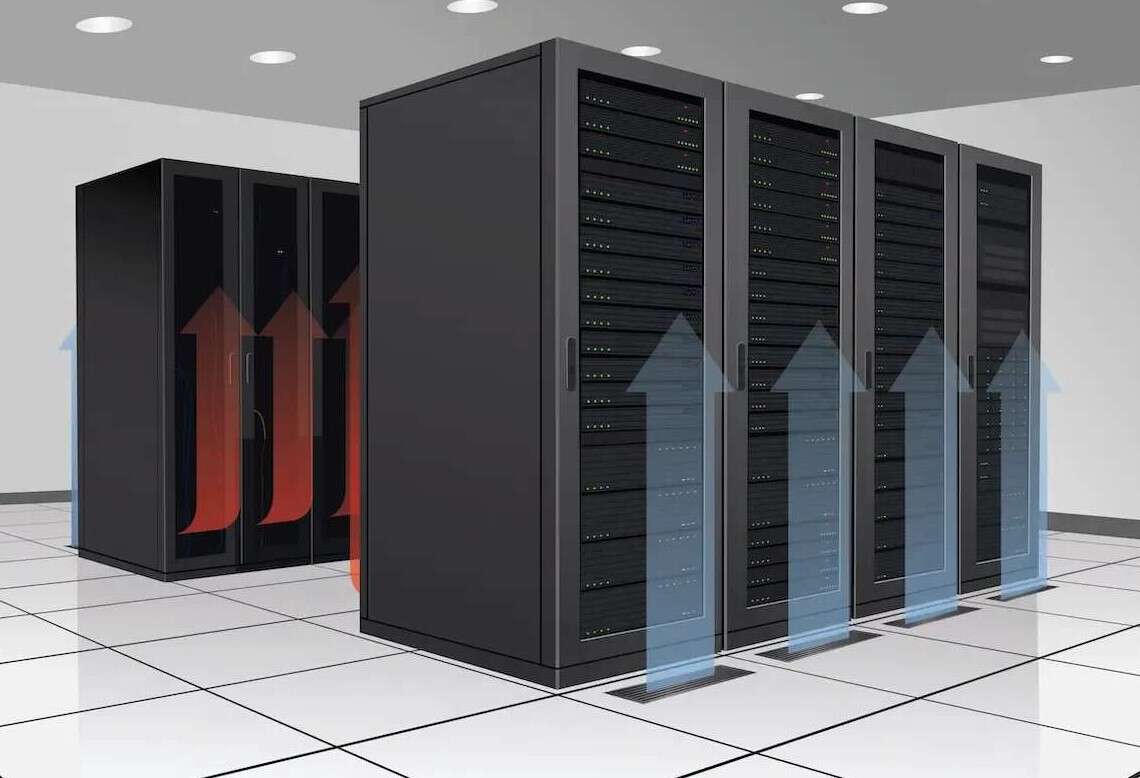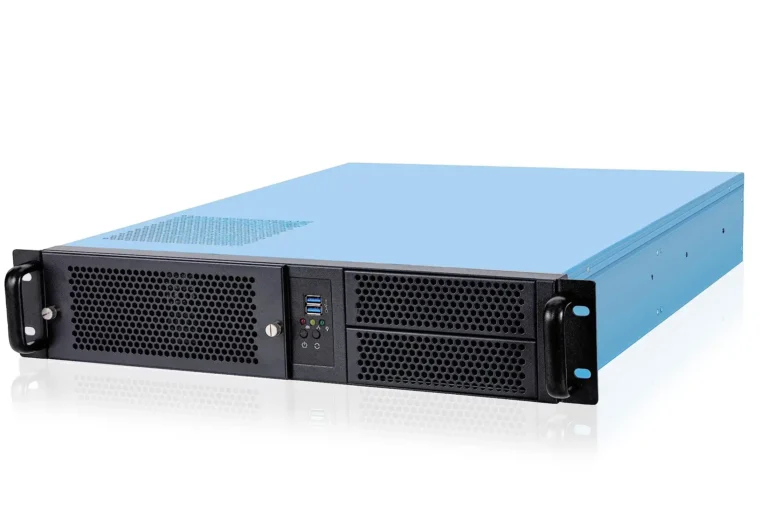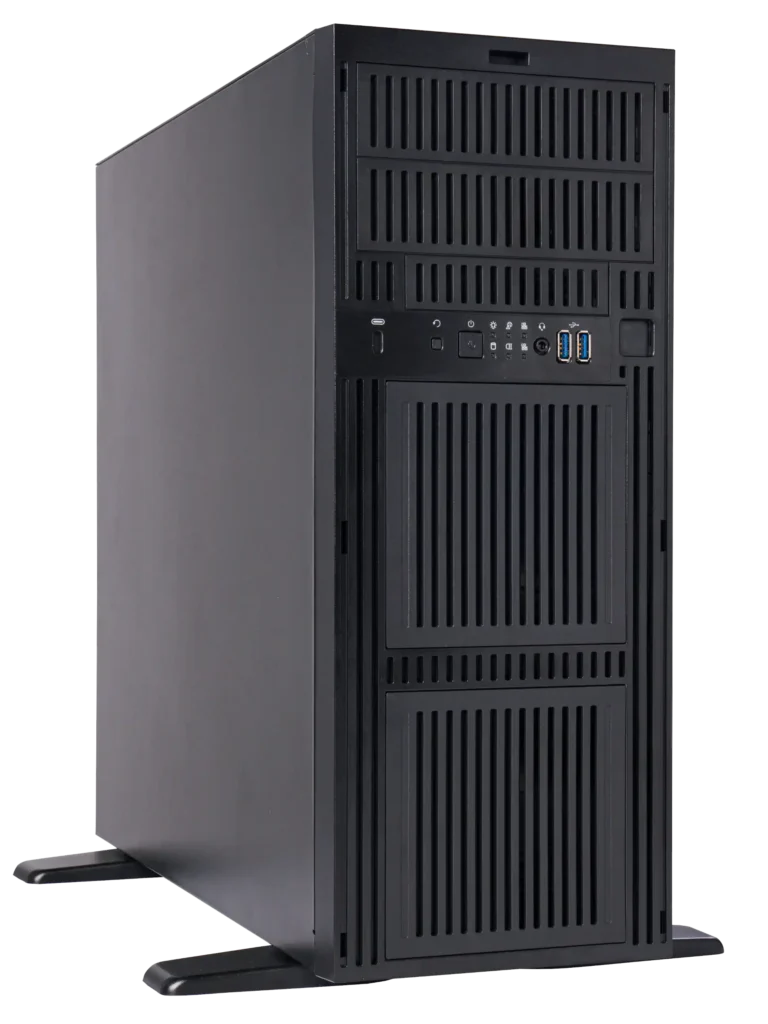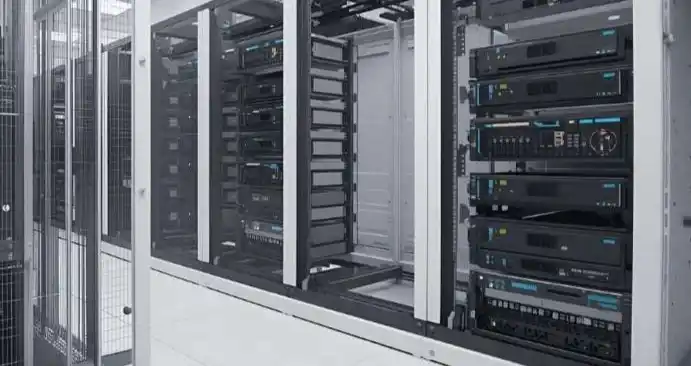You’re picking a chassis, not just a box. Height (1U/2U/3U/4U) locks in cooling, bays, risers, even future upgrades. Below is a fast, practical take—plain talk, a few war stories, and some hard-won rules of thumb. We’ll also point you to matching IStoneCase lines for bulk, OEM/ODM, and long-run rollouts.
What “U” means in a server rack pc case
One “U” equals 1.75 inches (44.45 mm) of vertical rack space. A 42U rack holds forty-two 1U slices. Sounds trivial, but it drives everything—fan diameter, heat density, cable paths, and what your PDU and cold-aisle can handle. If you’re short-depth or wall-mounting, mind the rear I/O and CMA (cable management arm) swing. Don’t squeeze until it squeals.
Quick comparison table — 1U / 2U / 3U / 4U
| Height | Typical scenarios | Expansion (PCIe / GPUs) | Drive-bay pattern (common) | Cooling & noise | Best fits |
|---|---|---|---|---|---|
| 1U | Dense web tier, CDN edge, micro-VNFs | Few slots; low profile GPUs only | 2–10×2.5″ front (varies) | Tiny 40 mm fans; loud; tight thermals | Density first; cost per RU |
| 2U | Virtualization, DBs, mixed workloads | Many more risers; some single/dual-width GPUs | Up to 24×2.5″ or 8–12×3.5″ | Bigger fans; easier airflow | “Default” for most stacks |
| 3U | Capacity + add-in cards; short-depth racks | Full-height slots; room for accelerators | ~12–16×3.5″ (or combos) | 80/120 mm fans; service-friendly | NAS/SAN, hybrid compute |
| 4U | AI/HPC, large NAS, heavy expanders | 4–8 dual-width GPUs; tons of PCIe | 24–36×3.5″ options | Air volume wins; quieter per watt | AI training, big object stores |
Note: patterns above are “most seen” in the field. Exact counts depend on the model/backplane.

1U server pc case — when density wins
If you rent colo by the RU, 1U is tempting. You cram compute close to the top-of-rack switch, keep latency low, and scale linearly. The catch: airflow budget. Small fans must spin fast; noise climbs; heatsinks get low-profile; VRM headroom tight. You’ll often cap at fewer PCIe add-ins and shorter NICs/HBAs.
When do you go 1U?
- Stateless web/API nodes.
- Edge POPs and telco gear where every RU counts.
- “Fire-and-forget” fleet images that you reimage, not tinker.
If you need service loops, hot-swap fans, or just less whine, consider 2U as your calmer, saner cousin. For 1U–4U choices under one roof, see the IStoneCase server rack pc case lineup.
2U server rack pc case — balanced expansion & airflow
For most teams, 2U hits the sweet spot. You get larger fan walls, more PCIe risers, and better heatsink clearance. That means easier thermals under burst and space for extra NICs (25/100G), HBAs, or a light GPU. Storage gets flexible too: common builds offer up to 24×2.5″ NVMe/SAS or 8–12×3.5″ LFF.
Choose 2U when you:
- Consolidate virtualization (vSphere/Proxmox/Xen) and want future NIC/GPU options.
- Run OLTP or analytics that like fast NVMe midplanes.
- Need headroom for firmware-driven features (bifurcation, riser swaps).
Start broad here: server pc case for general 1U–6U, and the dedicated Rackmount Case hub for SKU depth and bulk orders.
3U computer case server — storage-forward & serviceability
Think 3U when the storage story matters and you still want add-in cards without Tetris. You can run full-height accelerators or HBAs and still keep a 12–16×3.5″ front bay wall (exact mix varies). Thermals relax; fan RPMs drop; your ops team stops wearing earmuffs.
Great fits:
- NAS/SAN nodes, backup targets, and object gateways.
- Short-depth racks where 4U won’t fit.
- Hybrid “compute + capacity” sleds for branch or lab.
Jump into IStoneCase’s 3U server case and 3U rackmount case categories for ATX/mATX/ITX support and varied bay maps—ideal if you need an atx server case footprint without giving up room to breathe.

4U atx server case / GPU server case — compute & capacity without the squeeze
When the workload eats power and PCIe lanes, 4U keeps you sane. You get big air volume, support for dual-width GPUs (4–8 is common), and 24–36 LFF options for fat data lakes. Less thermal throttling, easier cable routing, and real space for N+1 PSUs and front-to-back airflow.
Use 4U for:
- AI/HPC (training, RAG, vector DBs, massive batch jobs).
- Big storage (object stores, video archives, Veeam/ZFS pool heads).
- Multi-function monsters (accelerators + bays + 100G uplinks).
Browse GPU server case for accelerator-ready frames and 4U rackmount case for deep-bay chassis. If you’re doing staged rollouts or need ODM tweaks (fan wall, backplane skew, riser mapping), IStoneCase’s OEM/ODM team will dial it in—yeah, we actually ship those changes, not just talk.
NAS devices in 3U/4U (and when 2U is fine)
If the job is mostly storage, a 3U/4U plan saves headaches: bigger 120/80 mm fan walls, quieter per watt, and straight-shot cable paths to HBAs. But some teams still land on 2U for smaller arrays when rack density or budget pressure bites. For enclosure mixes from 4-bay to 12-bay, see NAS devices. Keep the noise profile and hot-swap policy in mind—you dont want to open a ticket every time a fan squeaks.
Decision path by workload (fast and honest)
- Stateless compute / edge POPs → Start 1U; if you hit add-in limits or heat, step to 2U.
- Virtualization & databases → 2U by default; plan PCIe risers for NIC/HBA growth.
- Hybrid compute + storage → 3U gives you bays + full-height cards without hair-pulling.
- AI training / heavy accelerators → 4U with proper PSU sizing and airflow budget.
- Cold archive / object store → 4U high-bay is king; fewer sleds, easier rebuild windows.
Pro tip: leave 20–30% free PCIe and drive capacity on day one. It’s cheap insurance against surprise features, new NICs, or “let’s pilot GPUs” requests from the ML team.

Accessories & install: Chassis Guide Rail, Wallmount Case, airflow sanity
Chassis Guide Rail
Rails sound boring, but they decide your service window risk. Tool-free rails cut swap time, save fingers, and protect the PDU. If you mix heights (1U–4U) or run short-depth cabinets, validate rail reach and CMA clearance first. Start here: Chassis Guide Rail.
Wallmount Case & tight spaces
Small office, retail, or edge closets? A Wallmount Case is cleaner than balancing gear on a shelf. Use front-to-back airflow, dust filters, and keep cable slack. Watch door swing; it bites more often than people admit.
How this maps to IStoneCase lines (OEM/ODM, bulk, “real world”)
IStoneCase builds cases for data centers, algorithm centers, enterprises, SMBs, IT service shops, enthusiasts, and research labs. You can start from off-the-shelf frames and ask for OEM/ODM reworks:
- Thermal: different fan walls, shrouds, baffles, or front-to-back remap.
- Storage: switch to NVMe midplanes, SAS expanders, mixed 2.5″/3.5″ sleds.
- Risers/Slots: set bifurcation, L-shaped risers, or extra full-height clearance.
- Serviceability: thumb-screws, quick-pull fans, labeled harnesses.
- Branding & SKUs: white-label front bezels and fixed BOM for repeat orders.
Tie it all together in your cart with: server rack pc case, server pc case, computer case server, atx server case, GPU server case, NAS devices, and Chassis Guide Rail. Pick the height first, then the bay map, then the risers. It’s like Lego, except it runs your business.




